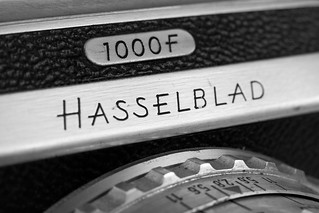Difference between revisions of "Hasselblad 1000 F"
m (removed stub) |
Hanskerensky (talk | contribs) (Replaced no longer avaialable image with /photos/greyscale3/22691891690) |
||
| Line 1: | Line 1: | ||
| − | |||
{{Flickr_image | {{Flickr_image | ||
| − | |image_source= http://www.flickr.com/photos/ | + | |image_source= http://www.flickr.com/photos/greyscale3/22691891690/in/pool-camerawiki/ |
| − | |image= http:// | + | |image= http://farm1.staticflickr.com/663/22691891690_3210536167.jpg |
|image_align= right | |image_align= right | ||
| − | |image_text= | + | |image_text= Hasselblad 1000F |
| − | |image_by= | + | |image_by= Mike Novak |
| − | |image_rights= | + | |image_rights= with permission |
}} | }} | ||
| − | |||
After [[Hasselblad]] introduced the original [[Hasselblad 1600 F| 1600 F]] in 1948, it became evident that the focal-plane shutter was the weak link in the design. With the '''1000 F''' introduced in 1952, Hasselblad redesigned the shutter, with a top speed of 1/1000 sec. rather than the (perhaps over-ambitious) 1/1600 sec. of the original model. Where the standard lens of the 1600 F had been a [[Kodak]] [[Kodak_lenses#Kodak_Ektars|Ektar]], the 1000 F was also sold with a 80mm f/2.8 [[Tessar]] from [[Carl Zeiss]], the beginning of a long association between the two firms. The original lens series also offered 135mm f/3.5 or 250mm f/5.6 Zeiss Sonnars. | After [[Hasselblad]] introduced the original [[Hasselblad 1600 F| 1600 F]] in 1948, it became evident that the focal-plane shutter was the weak link in the design. With the '''1000 F''' introduced in 1952, Hasselblad redesigned the shutter, with a top speed of 1/1000 sec. rather than the (perhaps over-ambitious) 1/1600 sec. of the original model. Where the standard lens of the 1600 F had been a [[Kodak]] [[Kodak_lenses#Kodak_Ektars|Ektar]], the 1000 F was also sold with a 80mm f/2.8 [[Tessar]] from [[Carl Zeiss]], the beginning of a long association between the two firms. The original lens series also offered 135mm f/3.5 or 250mm f/5.6 Zeiss Sonnars. | ||
| Line 14: | Line 12: | ||
{{Flickr_image | {{Flickr_image | ||
|image_source= http://www.flickr.com/photos/_spacedog_/5301808750/in/pool-camerawiki | |image_source= http://www.flickr.com/photos/_spacedog_/5301808750/in/pool-camerawiki | ||
| − | |image= http://farm6.staticflickr.com/5165/ | + | |image= http://farm6.staticflickr.com/5165/5301808750_1dc0a3c155_n.jpg |
|image_align= left | |image_align= left | ||
|image_text= Nameplate detail | |image_text= Nameplate detail | ||
Revision as of 05:34, 4 October 2016

|
| Hasselblad 1000F image by Mike Novak (Image rights) |
After Hasselblad introduced the original 1600 F in 1948, it became evident that the focal-plane shutter was the weak link in the design. With the 1000 F introduced in 1952, Hasselblad redesigned the shutter, with a top speed of 1/1000 sec. rather than the (perhaps over-ambitious) 1/1600 sec. of the original model. Where the standard lens of the 1600 F had been a Kodak Ektar, the 1000 F was also sold with a 80mm f/2.8 Tessar from Carl Zeiss, the beginning of a long association between the two firms. The original lens series also offered 135mm f/3.5 or 250mm f/5.6 Zeiss Sonnars.
This model was succeeded by the Hasselblad 500 C introduced in 1957—launching the leaf-shutter models which made Hasselblad the workhorse of professional photographers for decades to come. Hasselblad returned to making focal-plane shutter cameras with the Hasselblad 2000FC in 1977.

|
| Nameplate detail image by _Spacedog_ (Image rights) |